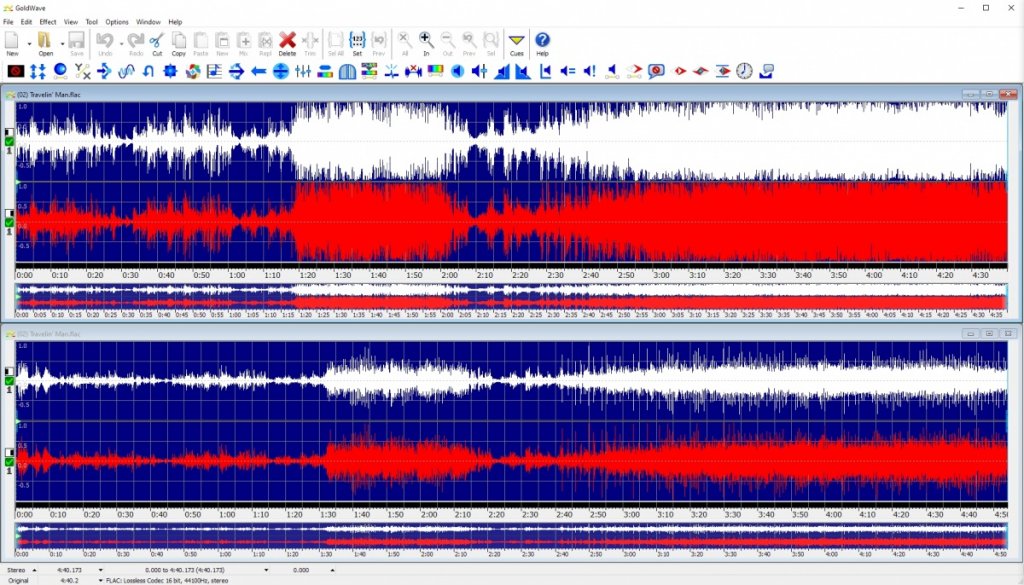James,
After reading some of the comments on Facebook about the two images I sent yesterday it occurred to me that a more useful comparison would be different masterings of the same music. As well, one user corrected my equating of digital clipping and brickwalling as though they're the same. They're different, but digital clipping is what we're concerned with - the lopping off of anything over 0 dB amplitude. Other than an artist's intentional preference for this sound, it's just part of bad or careless mastering.
Attached is an image that shows two waveforms for the song "Travelin' Man" from different masterings of Bob Seger's 1976 "Live Bullet" album.
The top file in the image is from the 2011 CD remastering of this album. It has a lot of digital clipping (every track except two) and a MAAT dynamic range score of 5. The whole album is full of digital clipping and the whole album DR score is 6.
The bottom file in the image is from an earlier CD release (perhaps the first CD release) of the album. It does not have any digital clipping and the MAAT dynamic range score is 13. The whole album has only two instances of digital clipping and MAAT dynamic range score for the whole album is 13.

So, I don't think there's any digital clipping going on with this. If you zoom into the waveform you will likely still see that it is rounded at the top. Yes, it has reached the top of the digital domain but it is unlikely that it's clipping. It just looks like that because you're zoomed too far out. Mastering engineers are quite good, especially recently, at getting things to be loud without clipping and it's extremely rare to have any digital clipping happen unless it's a low budget situation. They often use analog clipping or they clip the input transformer on the A to D converter, but it won't be clipping at the end of the digital domain. The mastering Limiter will stop it from going past nominal and therefore it's not clipping and there is not any digital distortion. Try zooming in and looking at the waveform.
That being said, there is a lot less dynamic range as you pointed out. Music is mixed to be more in your face but there are ways to give it dynamic perception even though it is more compressed. I used to loathe the "loudness wars" but I think the mastering engineers have gotten really good at it. They have found ways to make things get loud with less compression. I really enjoy the sound of many albums that have been put out in the last few years that way. Pretty much everything will be hitting the nominal 0 point (or -.01) these days, but a lot of it still sounds amazing.
Also of note, mastering for vinyl is a lot different than for CD's or anything digital. Too much low end on vinyl can make the record skip.